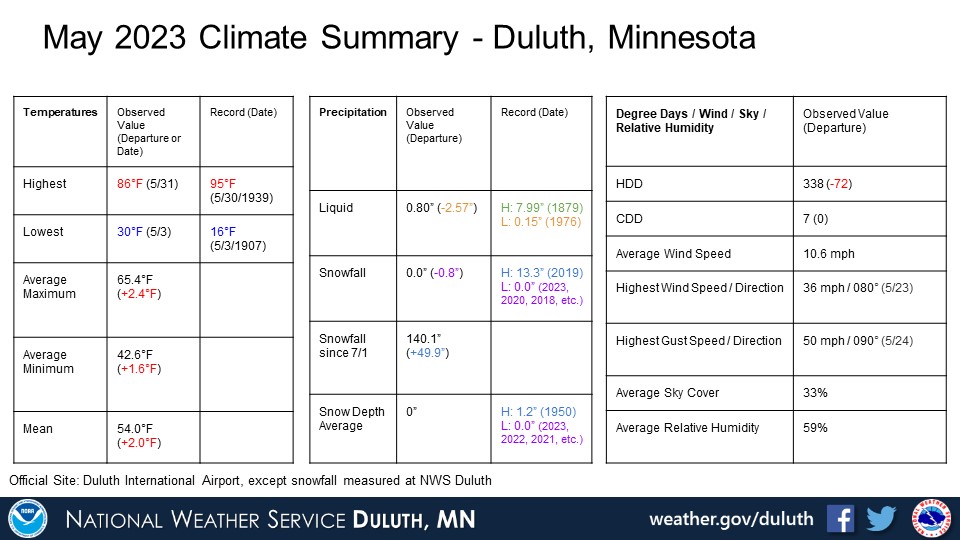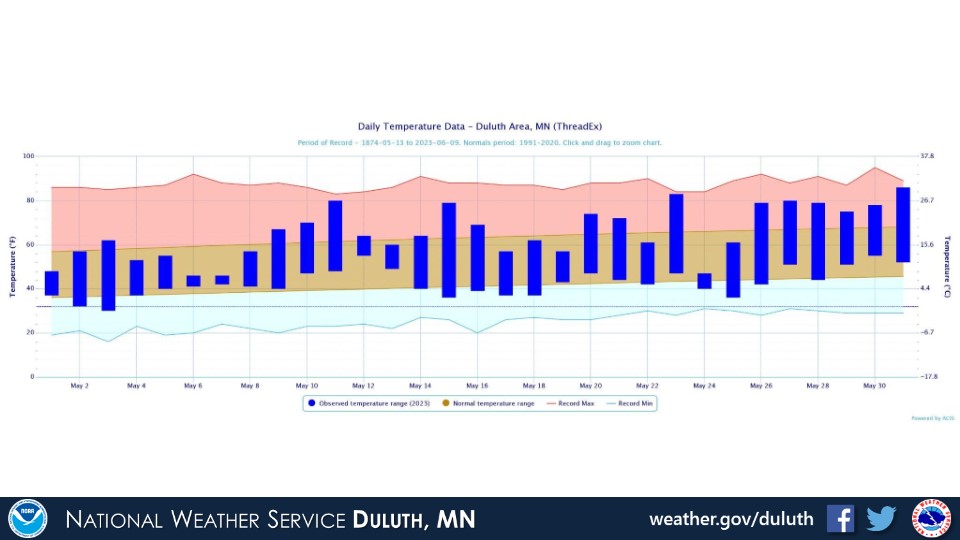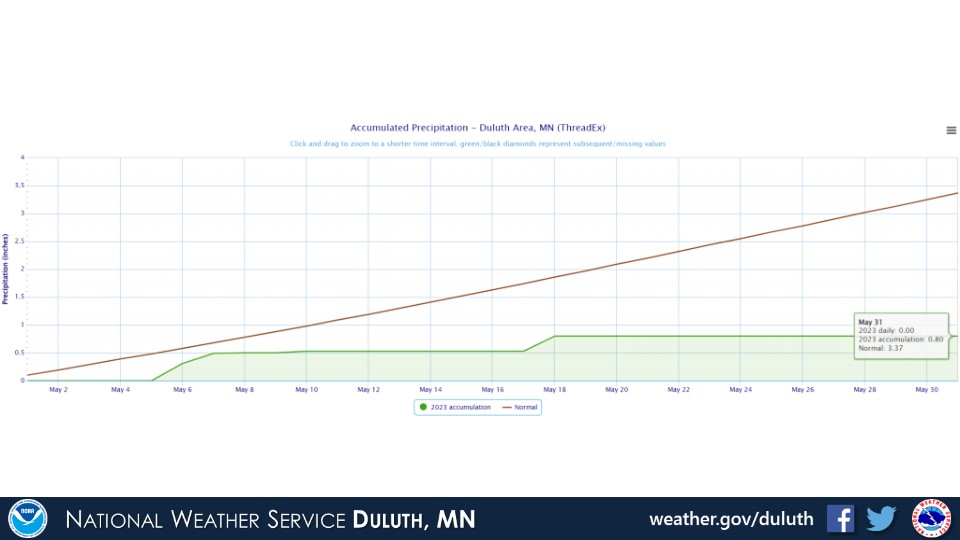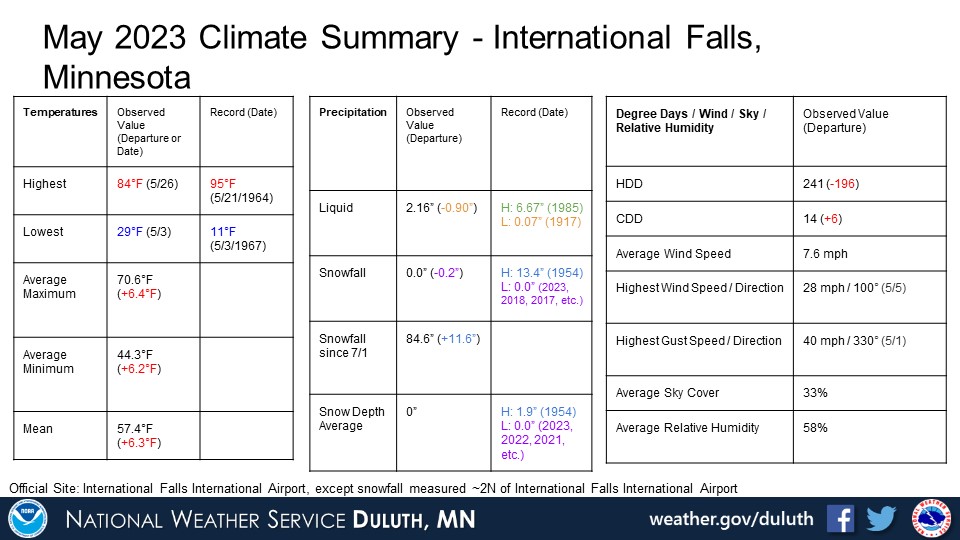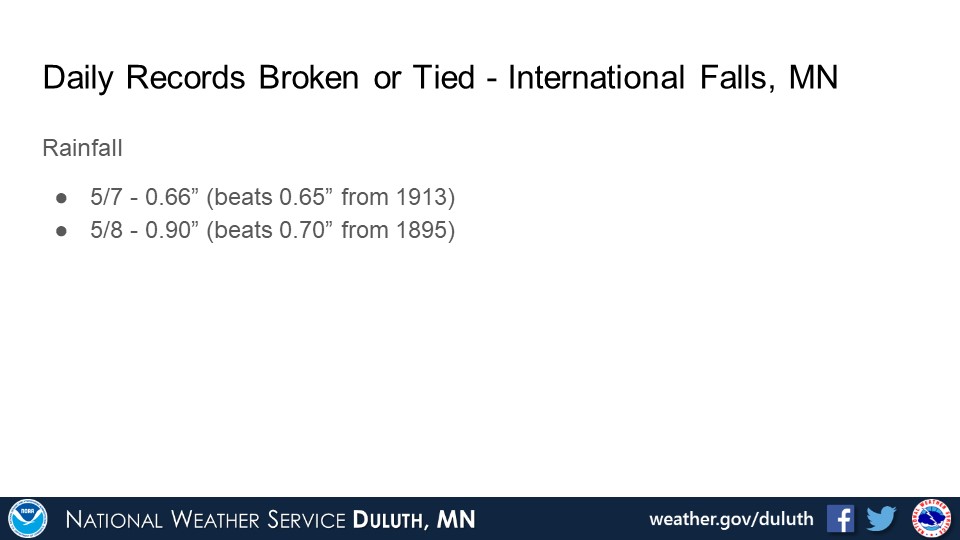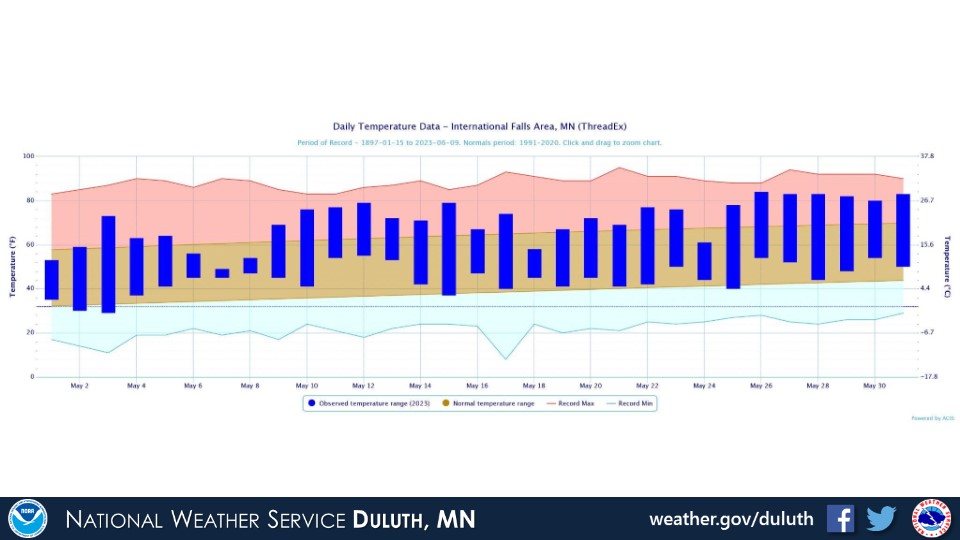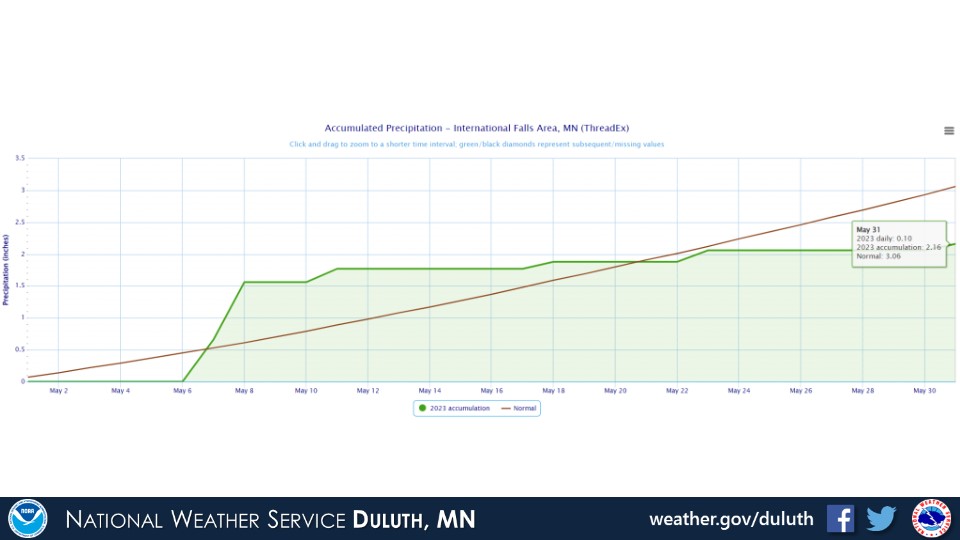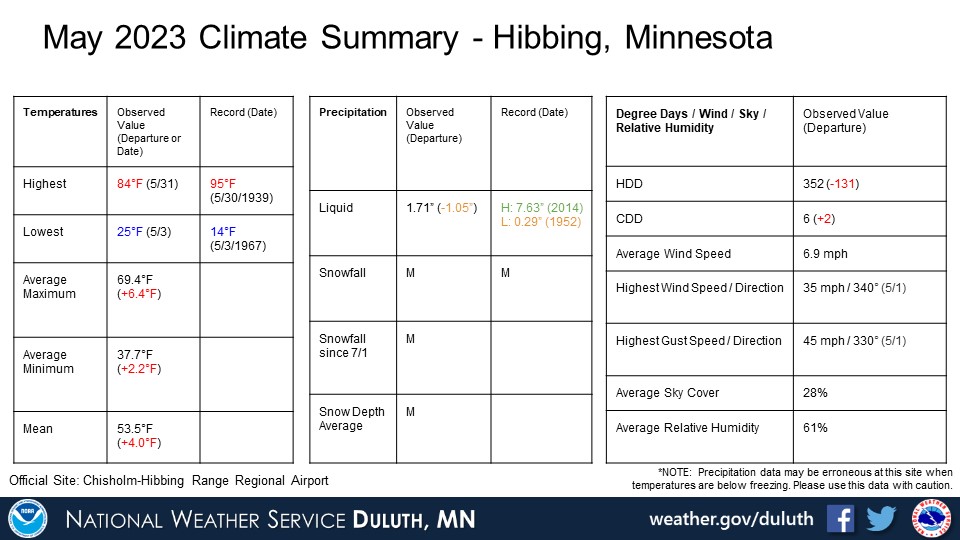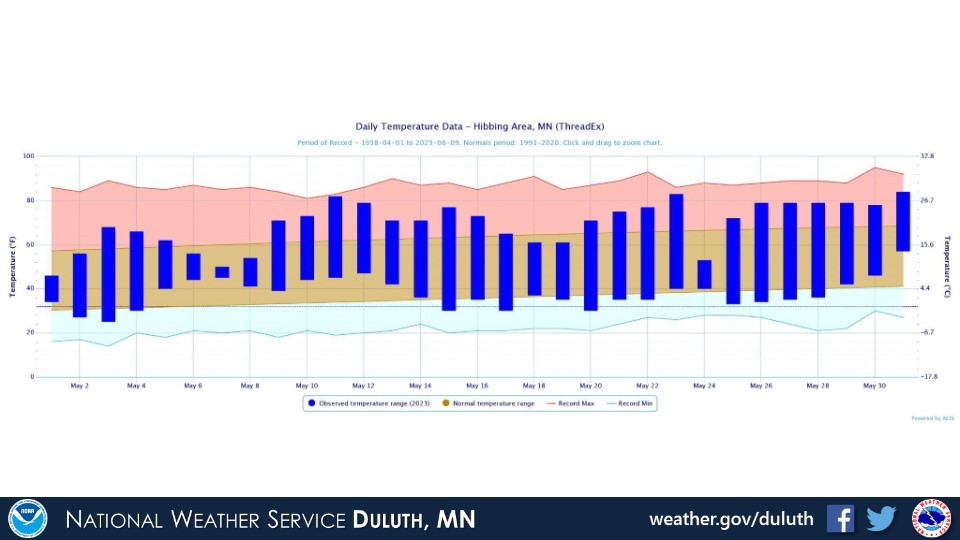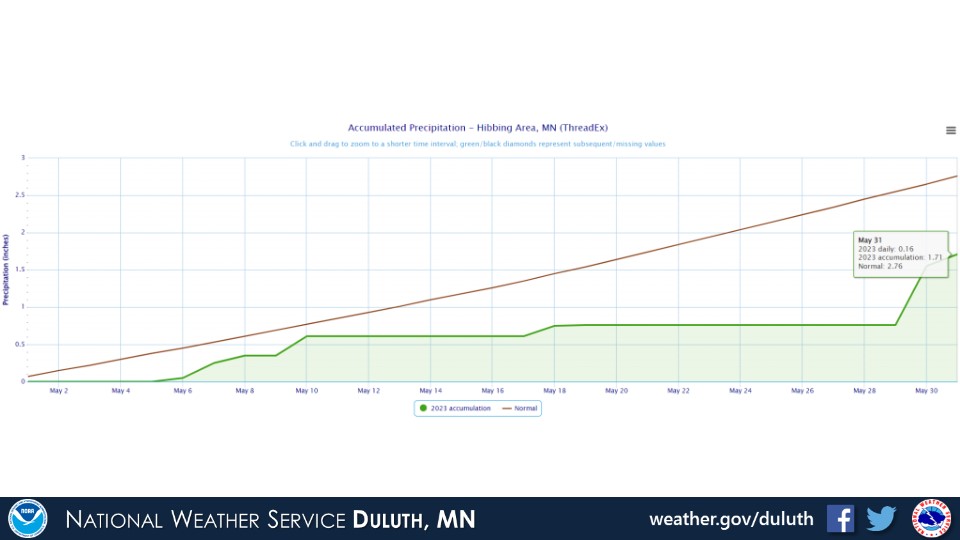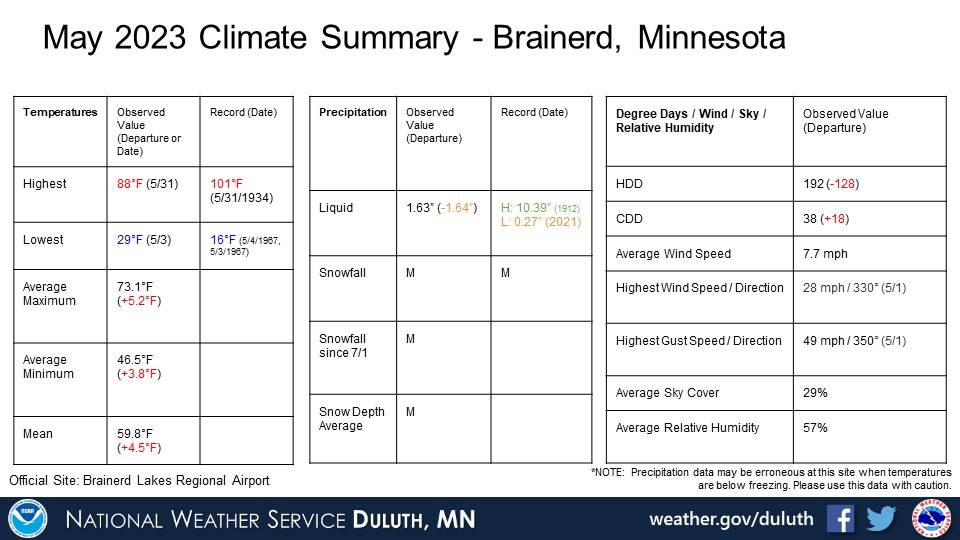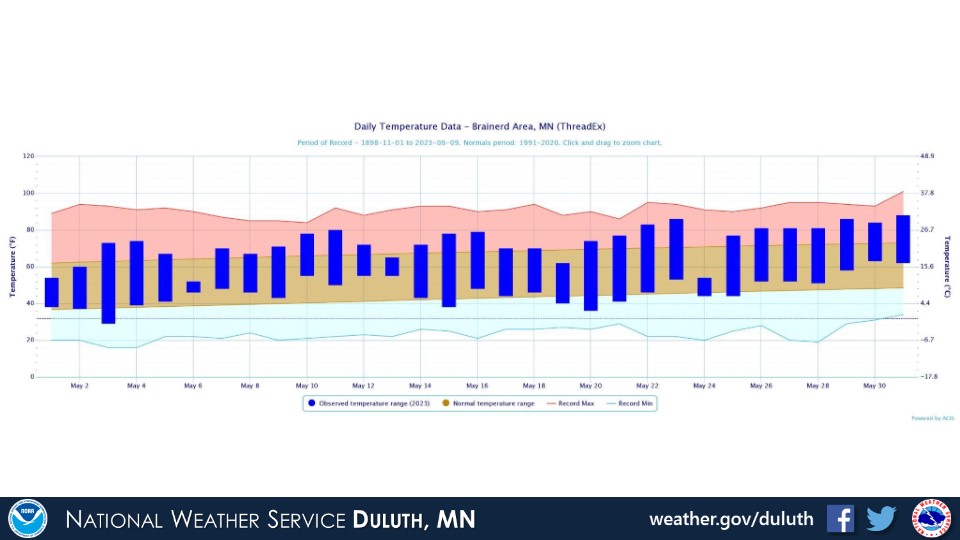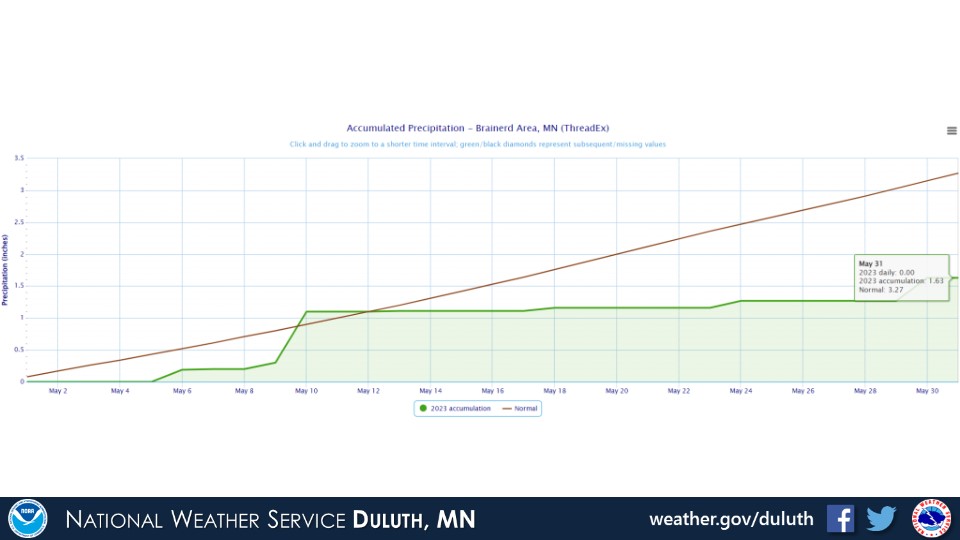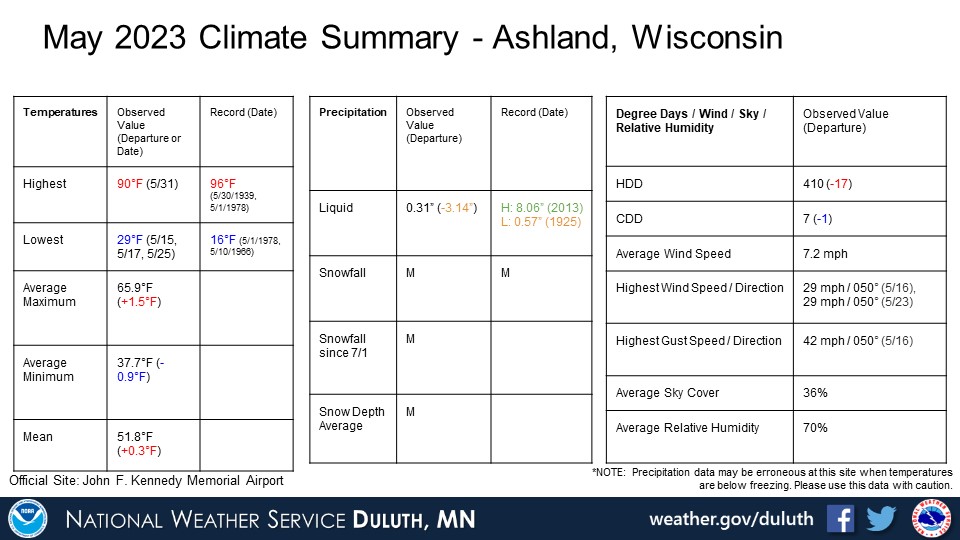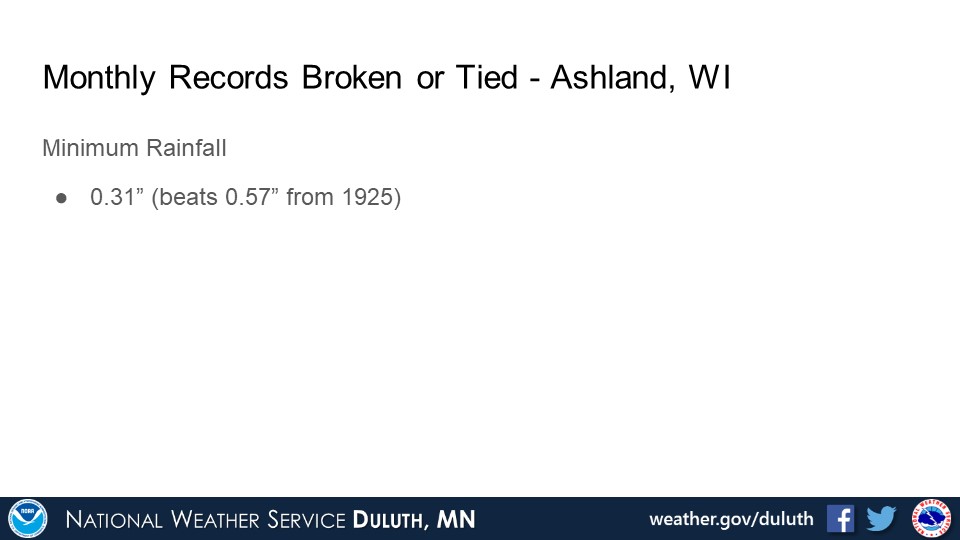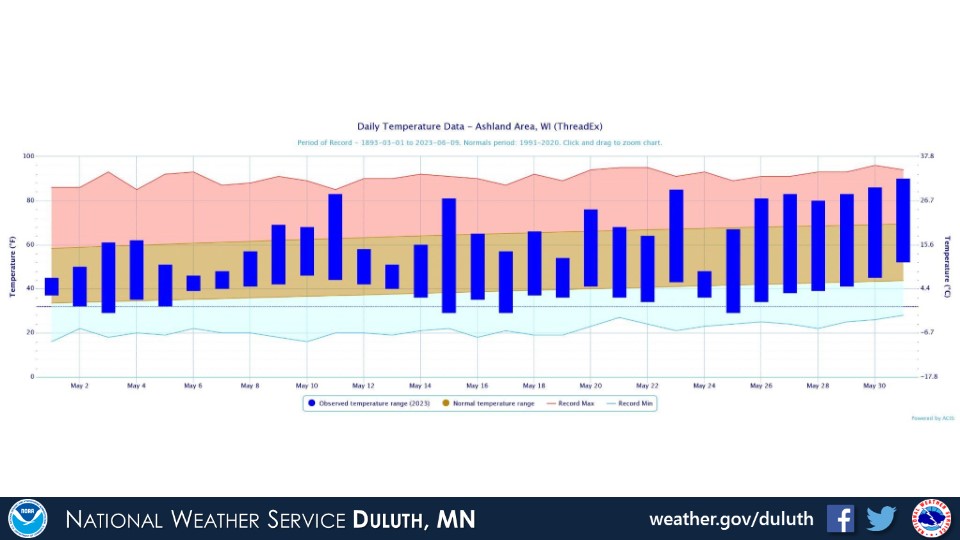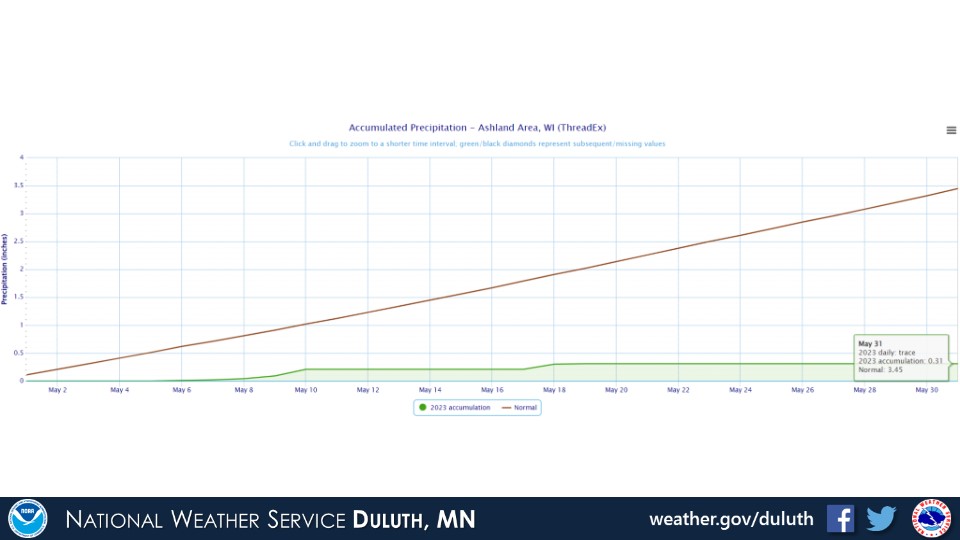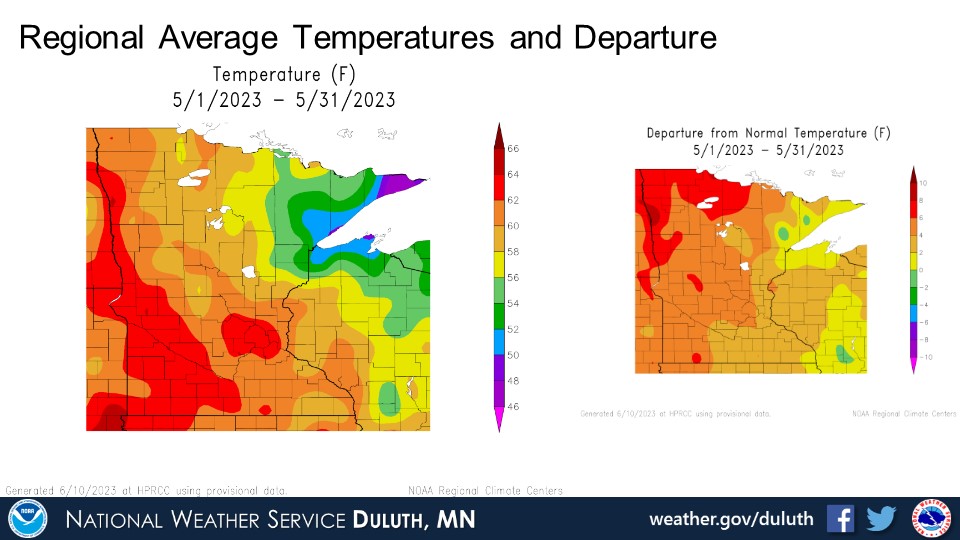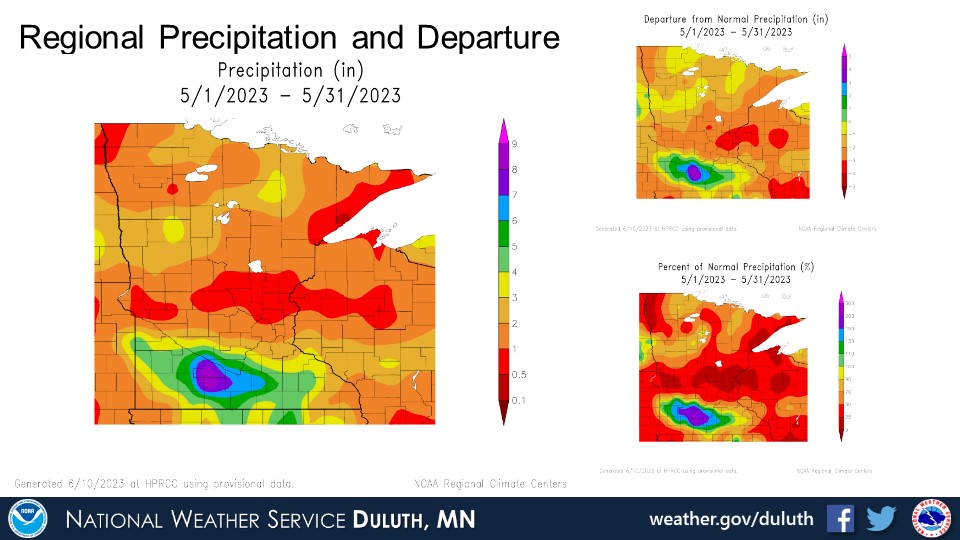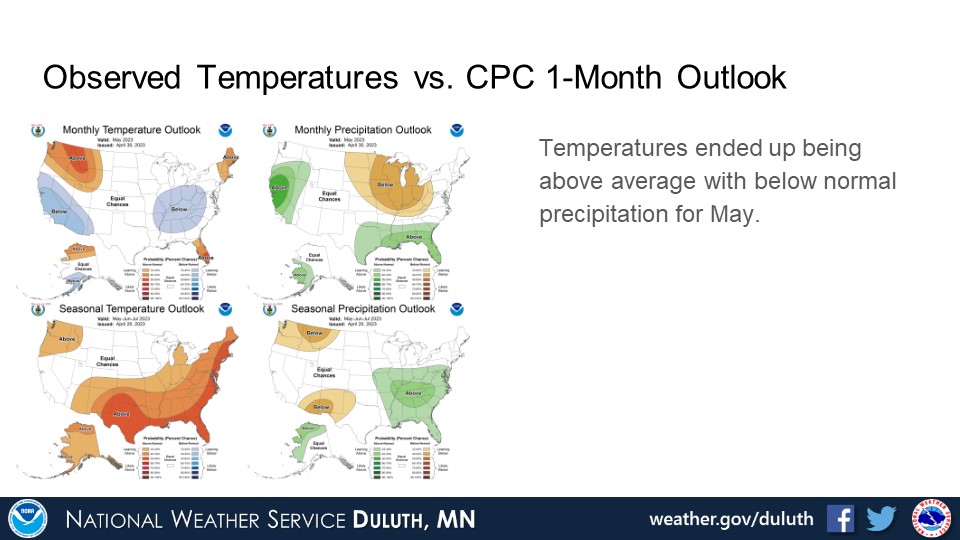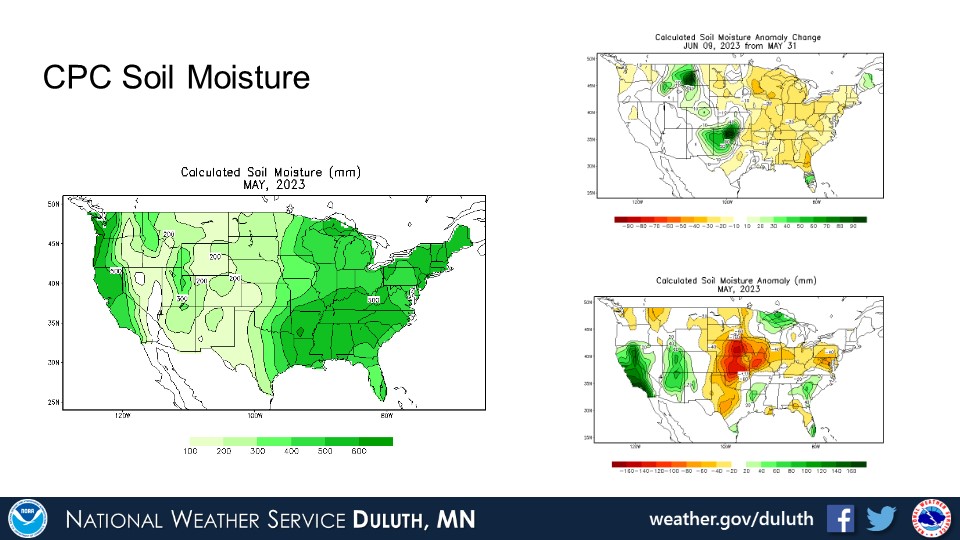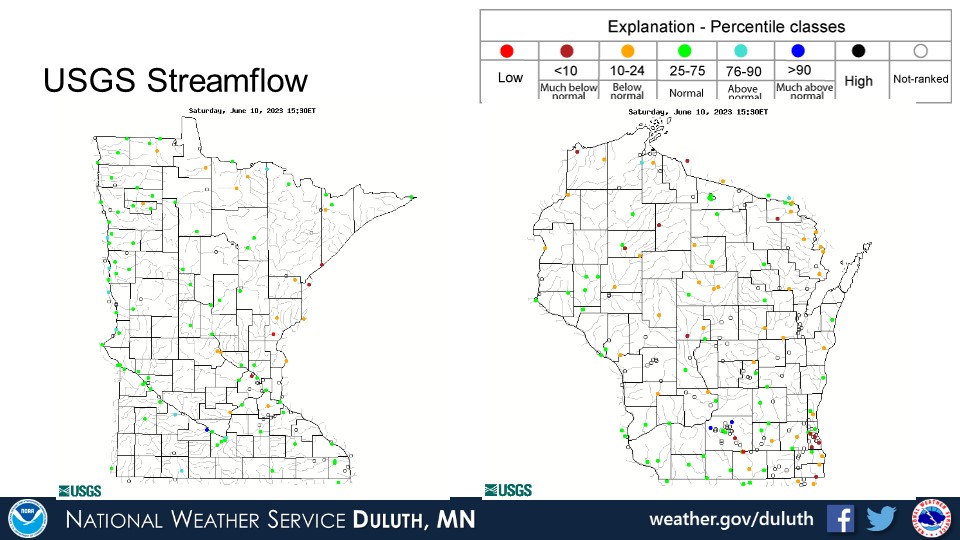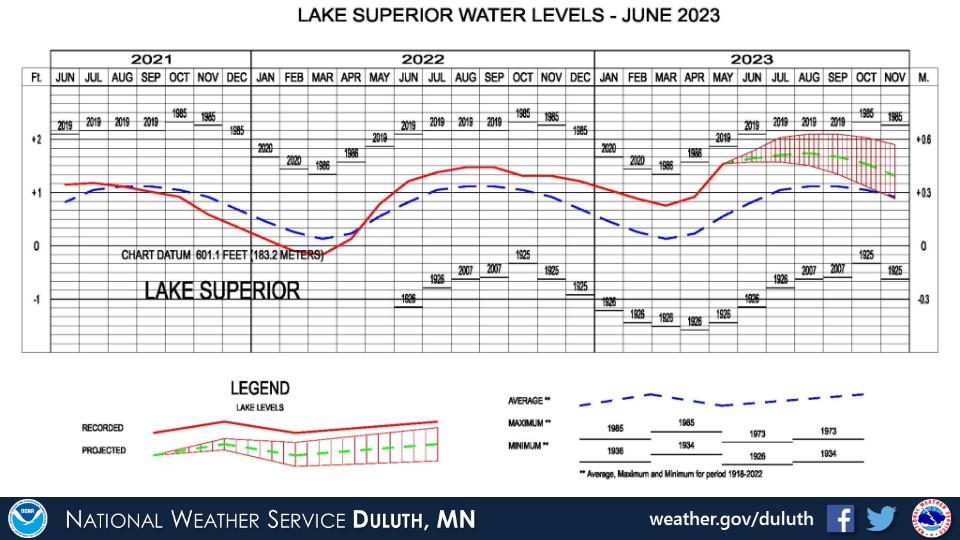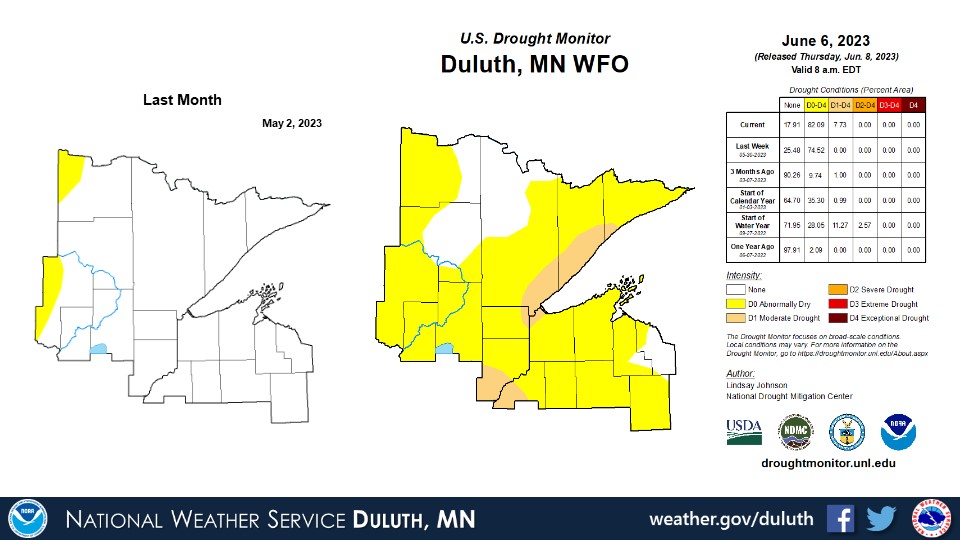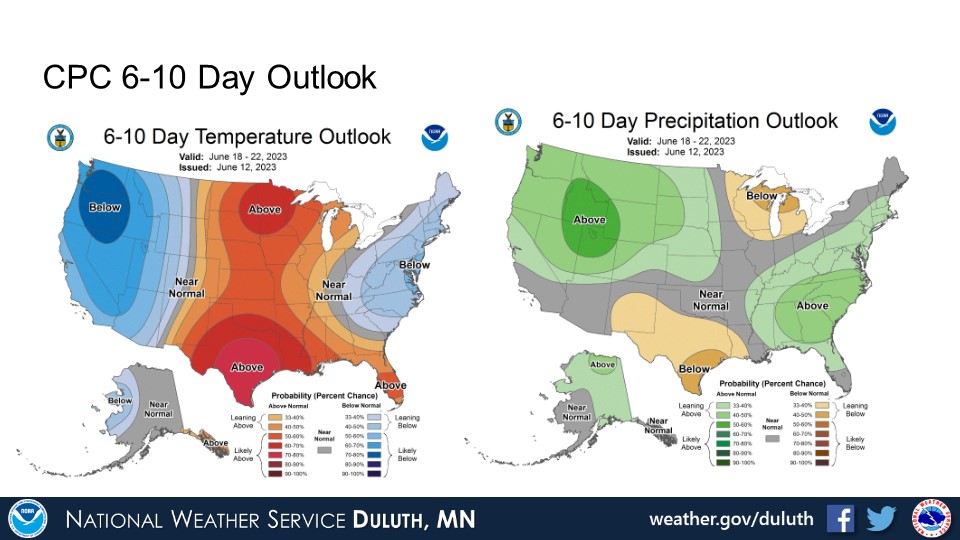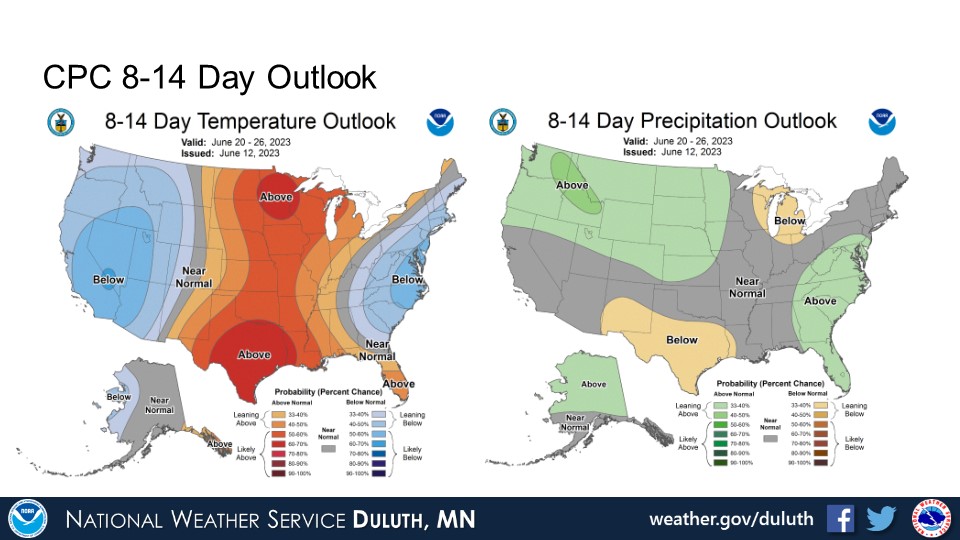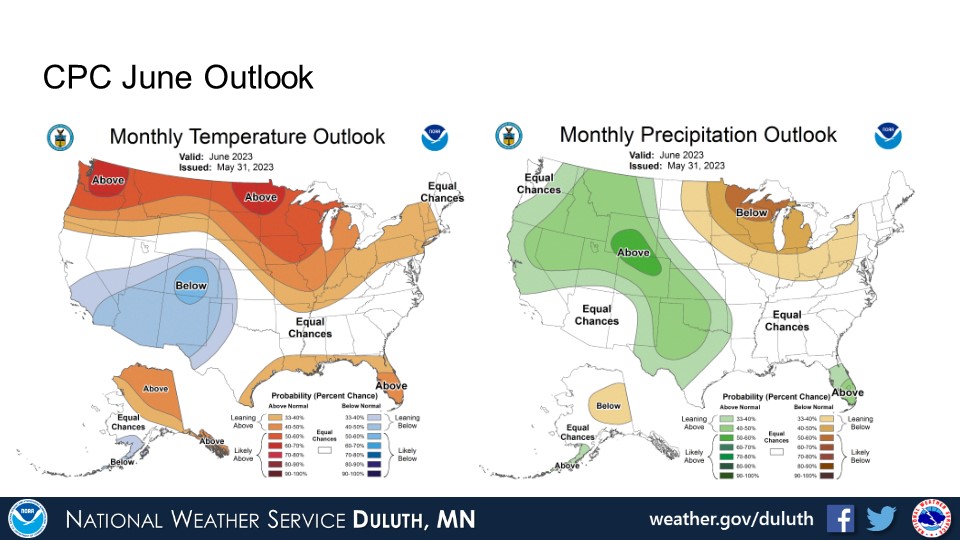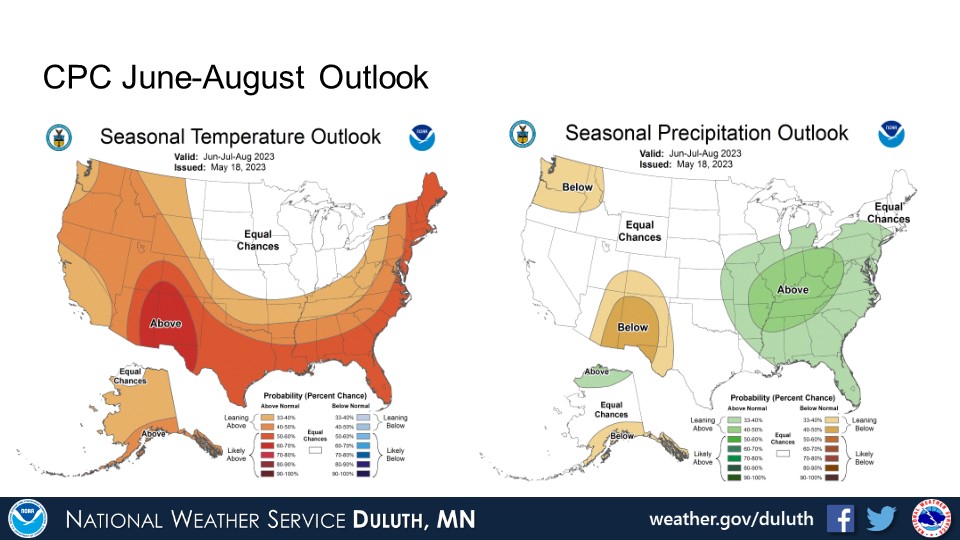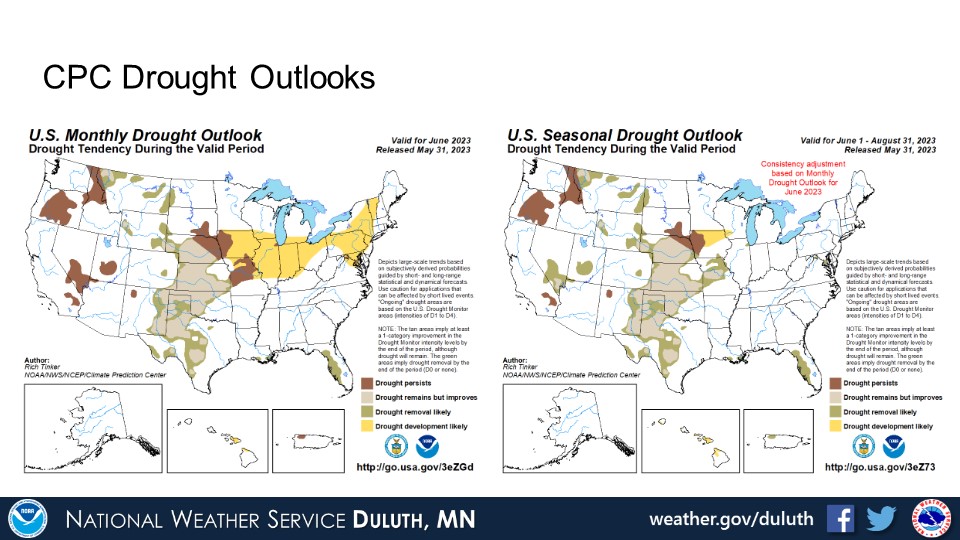
Lake effect snow will continue through Friday bringing significant snowfall to areas east to southeast of the Great Lakes. Snow squalls may impact New Year's Eve travel this evening and overnight across parts of the Great Lakes, Ohio Valley, Mid-Atlantic, and Upstate New York. Heavy rain will bring another flash flooding threat for southern California New Year's Eve into New Year's Day. Read More >
Duluth, MN
Weather Forecast Office
A very noticeable pattern change took place throughout May compared to April and March as very warm and dry weather prevailed. This led to a reversal from pretty widespread areal flooding due to the rapid melting of an area-wide deep snowpack in April to a very dry pattern with flash drought conditions developing through the month. Rainfall was below average everywhere, and for some places, several inches below average. Ashland recorded the driest May on record! Temperatures were also several degrees above average everywhere. As a result, rivers and streams are starting to fall below normal levels.
Duluth
International Falls
Hibbing
Brainerd
Ashland
Summary
Hydro
Outlook
 |
Media use of NWS Web News Stories is encouraged! Please acknowledge the NWS as the source of any news information accessed from this site. |
 |
Forecasts
Fire Weather
Great Lakes
Local Text Products
Winter Weather
Local Area Forecasts
Aviation
Marine
Rainy River Basin Page
Current Conditions
Current Observations
Public Information Statements
National Snowfall Map
NOHRSC Snow Analysis
Rain/Snow Reports
Winter Monitor
US Dept of Commerce
National Oceanic and Atmospheric Administration
National Weather Service
Duluth, MN
5027 Miller Trunk Highway
Duluth, MN 55811-1442
218-729-6697 - Duluth; 218-283-4615 - Intl Falls
Comments? Questions? Please Contact Us.



